The quality of your instrument’s sound is an essential part of playing an instrument. Nobody wants to sound “bad,” but it takes practice to sound “good.”
Trombone players face many problems that impact their sound, and it is hard to fix a problem if you don’t know what is wrong or why your trombone sounds “weird.” Before you rush to the instrument repair shop, here are a few troubleshooting solutions to fix your sound problems. Meaning your instrument might not be broken at all.
Trombone sound problems can be troubleshot by understanding the elements that create sound. There are six fundamentals of trombone sound that you can use to diagnose and solve your sound problems.
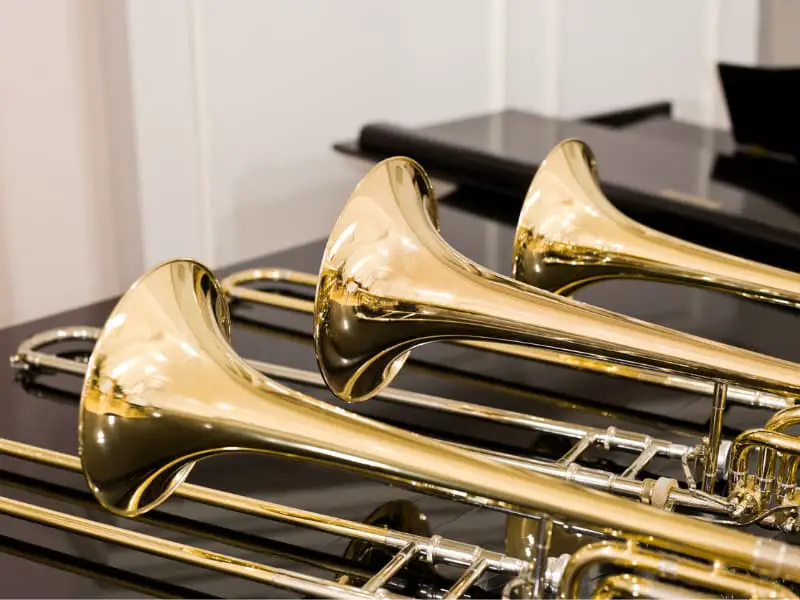
I will break down the six fundamentals of trombone sound. I will discuss some of the most common sound problems a trombonist might face and provides potential solutions.
The 6 Fundamentals of Trombone Sound
When you first learn to play trombone, you usually learn that six factors impact your sound. These factors are:
- Embouchure
- Air
- Articulation
- Proper Equipment
- Tongue and Slide Coordination
- Body Position
When you notice your trombone sounds bad or weird, ask yourself, “am I doing the six fundamentals correctly?” This should be the first step in troubleshooting trombone sound problems.
Fundamental #1 – Embouchure
Embouchure refers to how musicians apply their mouth to their instrument’s mouthpiece. Every brass and wind instrument has a proper embouchure which is required to play that instrument successfully.
For a good trombone embouchure, you must follow four basic steps.
🎵 Step 1)
Set and hold the corners of your mouth.
You can do this by making the corners of your mouth firm, just like when you make an expressionless (not smiling and not frowning) face.
Your corners should not be too loose or firm, simply controlled.
Top Tip: When you play different notes, remember that your corners will not move and to make sure your lips are not too tense.
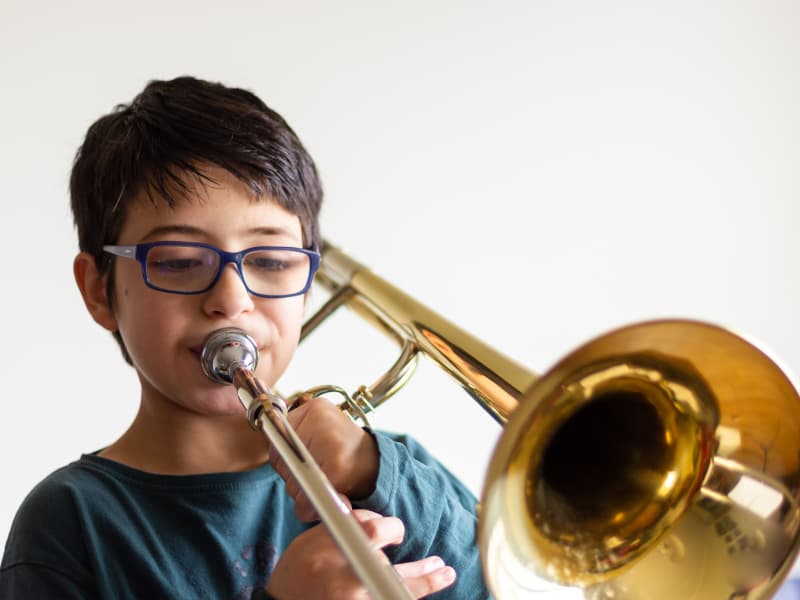
🎵 Step 2)
Correct placement of your mouthpiece on your mouth.
Your trombone mouthpiece must be placed on the center of your lips, the top half on your upper lip, and the bottom half on your lower lip.
This step sounds a bit obvious, but it is easy to get into a bad habit of playing with your mouthpiece in the wrong position.
🎵 Step 3)
Avoid too much pressure on the mouthpiece.
You will put pressure/hold the mouthpiece on your lips to control the vibration of your lips in order to play different tones.
Too much pressure makes it hard for your lips to vibrate, and your lips will get tired. You may see a ring on your lips from your mouthpiece after you finish playing, which is normal, but the ring should not be deep or dark red.
🎵 Step 4)
Open your throat.
Top Tip: When you play, think about trying to sing the letter “o.” While blowing air fast through your lips and mouthpiece, think about keeping your throat nice and open.
This allows for the proper air stream and tone flexibility, significantly affecting how your trombone will sound.
Fundamental #2 – Air
All woodwind and brass instruments require air to be blown through the body of the instrument in order to produce a clear and steady sound.
This will sound silly, but it is a great way to think about producing a solid and steady stream of air.
Imagine holding a pinwheel and being told to make it spin for as long as possible.
You would take a big breath and blow towards the pinwheel until your lungs were empty. The pinwheel should never stop spinning until your lungs are empty. When you play your trombone, picture that spinning pinwheel at the end of your slide.

Fundamental #3 – Articulation
Articulation is how a note or a group of musical notes should be played.
In order to play different notes or how long/short the notes should be played for is formed by the movement of your tongue.
You will say TAH to start the sound when you play a note. Saying TAH with proper embouchure means it is only your tongue inside your mouth that moves.
As a beginner, you will learn more about articulation and the different kinds of articulation over time. Remember to use TAH when playing.
Fundamental #4 – Proper Equipment
A pilot cannot fly a plane if it is broken or has the wrong or outdated parts. Your trombone is the same way. It must have the right parts to make the best quality of sounds.
As a student (in elementary or middle school), you should play with a small-bore horn before moving to a large one. The bore is the diameter of the tubing of your instrument.
Larger-bore trombones will create a darker and rounder sound appropriate for advanced players.
Top Tip: As a beginner, your small-bore trombone will be easier to play. Small-bore trombones will help you learn how to play your horn and prepares you for large-bore horns as you develop as a musician.
We talked a bit about the mouthpiece when we reviewed proper embouchure but having the right mouthpiece is a must. For beginners, it is customary to start playing using a Bach 12C or 6.5AL sized (or similar style and size).
You will graduate to a larger-bore horn which requires a larger mouthpiece like the Bach 5G.
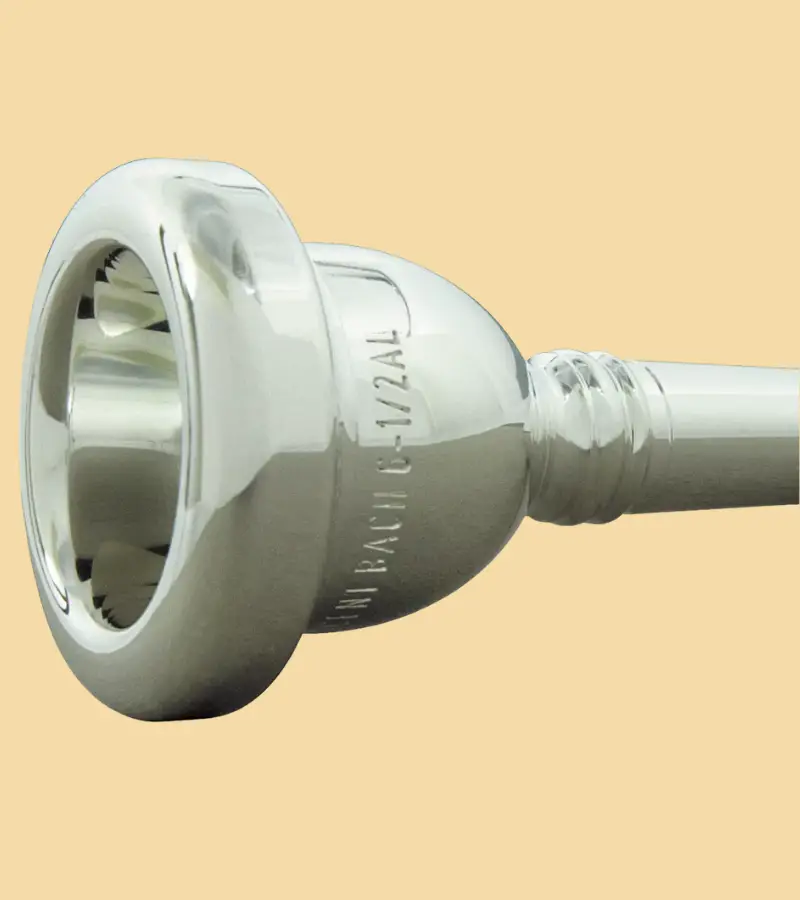
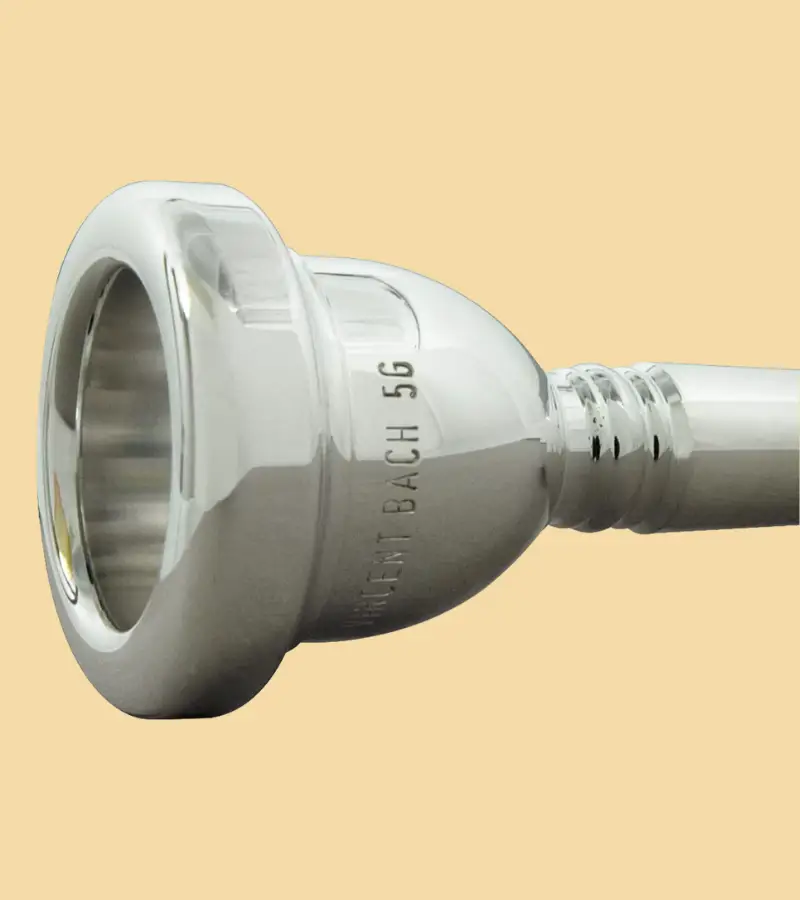
Maintaining your horn is crucial to playing your trombone successfully. Your main slide should drop quickly if you hold your horn vertically.
If it sticks or hitches, your main slide is not lubricated enough. Around once per week, you should lubricate your main slide using products like Trombotine, Yamaha Slide Cream, Yamaha Slide oil, etc.
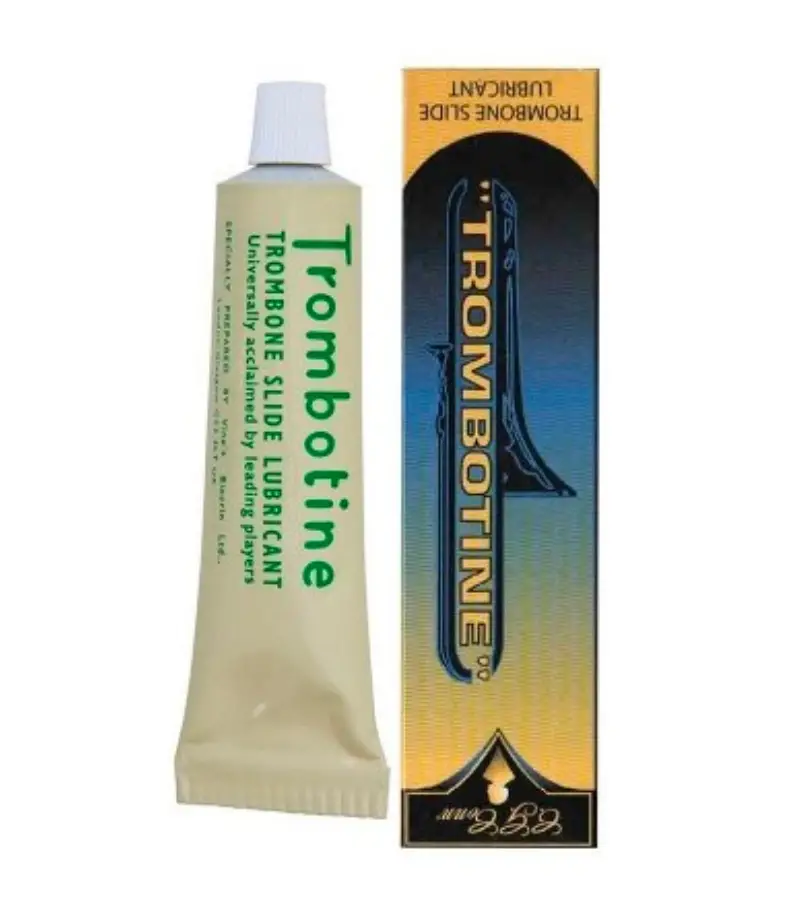
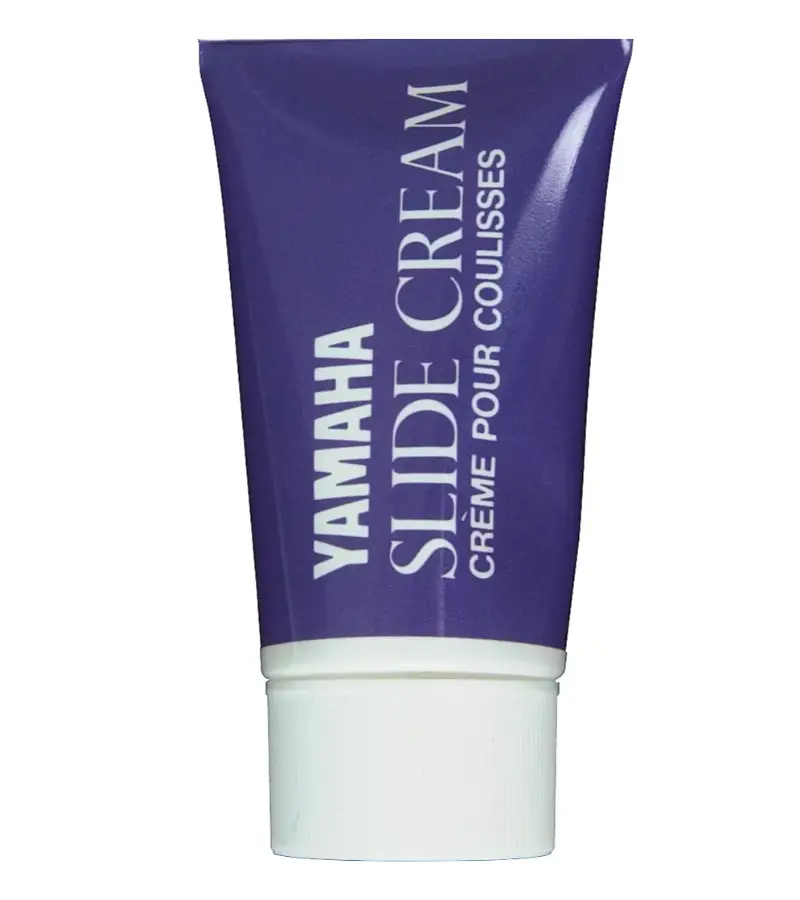
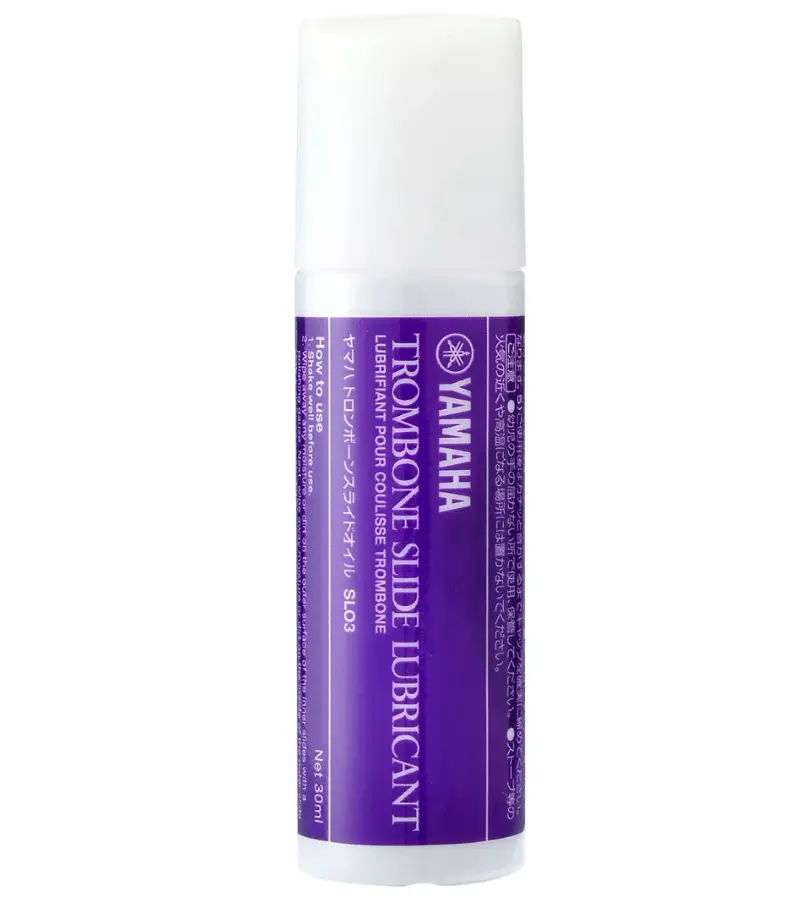
Top Tip: Don’t forget about your tuning slide! You should be able to move it with minimal effort. If you care for your horn and its maintenance, you must lubricate your tuning slide every 1-2 months. An excellent product for your tuning slide is Hetman Tuning Slide Grease.
Fundamental # 5 – Tongue and Slide Coordination
Tongue and Slide Coordination is the way your tongue starts a note at the same time you move into a slide position.
This takes a bit of time to perfect, which is to be expected.
Top Tip: If you are having trouble with the coordination, it is recommended that you play a song very slowly so you can better coordinate the tongue and slide. Then as it becomes easier, speed up the song.
Fundamental # 6 – Body Position
When you play your instrument, you need to be seated in the correct body position to ensure you can produce enough air to make sounds on your horn.
You should sit towards the front of your chair (your spine should not lean against the back of the chair), keep both feet on the ground, and sit as tall as you can. Relax your throat and sing “o” when you play.
Hold your hands in the proper positions, your left hand, in particular, so you can reduce tension from gripping your horn.
🎵 Note: Check out our in-depth guide on How to Hold your Trombone Properly (hand position guide).
Once you have checked that to make sure these six trombone playing fundamentals are correct, try playing again. If your trombone still sounds bad or strange, it’s time to diagnose and troubleshoot your sound problems more precisely.
Trombone Sound Troubleshooting Guide
You have reviewed your fundamentals, but your trombone doesn’t sound right. The way your trombone sounds can be caused by different things, but they each have a different solution.
Let’s break this down by some of the most common “bad” or “different” sound problems you may encounter.
Why Does My Trombone Rattle?
If your trombone makes a rattling sound, there are usually three causes for the rattle.
- Your slide might be too dry
- Your trombone is dirty
- The trombone was assembled incorrectly
🎵 Note: The most common cause of a trombone rattle is that there are loose or missing parts of your instrument.
An example of how loose or missing pieces of your trombone can cause rattling sounds is when your slide lock is missing.
The slide lock keeps your slide still; without one, your slide will move around more freely, leading to the rattle sound.
Tighten any loose parts (consider keeping a small box of travel-sized screwdrivers in your case or instrument locker. Or find a screwdriver that closely fits your instrument’s screws and keep it in your case).
If nothing is loose or missing, your slide may be too dry.
Lubricate your slide appropriately and try playing again. If it still has that annoying rattle, it may be time to clean your instrument.
Oil, dirt, and saliva can build up in your horn’s tubing and cause a rattling sound.
Clean build-up by taking your instrument apart at home, and with warm water, use a brass brush with bristles to scrub inside your tubing and rinse the brush before moving to the next part. Leave your trombone disassembled to dry completely before using it again.
It is easy to forget to clean your instrument, and if you have band after lunch or have eaten anything, rinse your mouth out or brush your teeth, so you are less likely to blow small pieces of food into your horn.
Top Tip: If a dirty trombone causes your rattling sound and you have never cleaned your instrument before, watch the video below on how to clean your trombone.
Why Does My Trombone Make A Crackling Noise?
If your trombone is making a crackling noise, it means there is too much saliva in your instrument. Try opening the water key (spit valve) and letting any liquid come out of your trombone.
If the crackling noises are still occurring even after you have released the saliva from your instrument, your embouchure is too loose, or your mouth is getting tired.
If those two things have been done and it is still crackling, take your trombone to a music repair shop and have an expert fix your instrument.
🎵 Note: The video below demonstrates what this crackling sounds like. The video uses a trumpet, but this happens to all brass instruments.
Why Does My Trombone Sound Choppy?
If your trombone sounds choppy, it’s because of your breathing.
It is easy to get into a song you are playing; little things like focused and controlled breathing can slip, leading to a choppy sound.
To un-chop your notes, make sure you are in a proper playing position and relax/slow down your airflow. Go back to air stream basics and remember the spinning pinwheel.
Why Does My Trombone Sound Blatty/Splatty?
Similar to the issue behind a choppy sound, a blatty/splatty sound is caused by improper breathing.
Blatty or splatty sounds are caused by overblowing or using too much air when you start playing a note.
Working on your articulation can help minimize these splats of notes. Your tongue should not be heavy when you start a note and should stop each note at the end.
Why Does My Trombone Sound Congested/Muffled?
If your trombone sounds congested or muffled, the source of the problem is incorrect placement of the mouthpiece and embouchure.
Embouchure is the essential part when it comes to producing a good sound on your trombone. Your mouthpiece should be centered on your lips, with the top lip touching the top of the mouthpiece and the bottom lip touching the bottom.
Congestion stems from too much of your lips inside the mouthpiece which reduces the ability of the lips to move and buzz. Muffled sounds mean the mouthpiece is too low and should be adjusted.
Make sure you are filling your lungs with air before you play and using a steady stream of air.
🎵 Note: Remembering to open your throat and mouth cavity will allow the sounds to come out crisper and more precise. If you are clenching your teeth together, relax them and hold them just slightly apart so your air passes freely through your lips.
Keeping those three things in mind, now try moving your mouthpiece higher or lower on your lips and playing again. If you use proper trombone embouchure, the congested and muffled sounds will stop.
Why Does My Trombone Sound Tight/Thin/Tiny/Pinched?
If your trombone sounds tight/thin/tiny/pinched and doesn’t have that rich and warm trombone sound, a few different things could be causing this problem.
Your tongue may be blocking your ability to pass a steady air stream through your trombone. To prevent your tongue from blocking airflow, lower your tongue inside your mouth and think about saying “o” as you play.
If the problem isn’t resolved by opening your mouth and lowering your tongue, the issue is that your embouchure may be too tight.
Top Tip: Remember that your corners should be held, but your lips should not be tense. The tension changes the space and how your lips move inside your mouthpiece.
To correct this problem, just decrease the tension in your lips until you hear a change in sound quality. Listen below to hear an example of what a trombone sounds like when the embouchure is too tight.
Why Does My Trombone Sound Distorted?
If your trombone sounds distorted or the note has a wavering quality, it means you are egging the note.
🎵 Note: Egging notes means that there is too much movement in your lips, jaw, or throat at the start or end of a note.
The solution to this sound problem is to focus on proper embouchure. Below is an example of what egging notes sound like.
Why Does My Trombone Sound Fuzzy/Airy?
A fuzzy and airy sound is because your lip opening (aperture) is too large.
Too large of an aperture can happen when there is excessive pressure from the mouthpiece against the lips.
To fix a fuzzy or airy sound, put your trombone down and practice with just your mouthpiece. Hold your mouthpiece against your lips lightly and without a lot of pressure while buzzing.
Here is an example of what a fuzzy tone sounds like.
Why Does My Trombone Sound Dry?
If your trombone sounds dry, one of the easiest ways to fix it is by cleaning your slide. After cleaning, you find that your trombone still sounds dry; try using more air to fill the horn.
Why Does My Trombone Sound Wet?
Wet sounds mean too much moisture in your instrument. Look at the recommendations given for Why Does My Trombone Sound Crackly?
If you have tried all the different methods in this article and your trombone STILL sounds bad, it can mean your horn is damaged and needs to be repaired. Having a good sound quality and tone is a skill you learn as you play; that is why practicing is so important. Your embouchure affects your trombone sound, and having a good embouchure can make all the difference in your sound and to
Disclaimer: This post may contain affiliate links. We only recommend high-quality products that are used and recommended by real musicians. If you use these links to buy something we earn a small commission.
